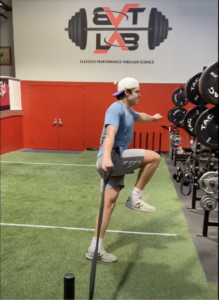In-season training has long been a controversial topic for athletes and teams.
Many coaches have long believed that when their athletes are in-season, their sport should be their only focus. But as the season progresses, what happens?
The common issues of production output and injuries rear their head and cause problems to most of the roster. Therefore, in-season training has become a huge focus throughout the industry and can be seen prominently throughout most college and professional athletics.
This is why I have always been confused as to why High School and Youth athletics neglect to keep training throughout the season. Is it fear of being tired or sore from a workout? Fear of cutting into practice time? Or just lack of education?
At BVT LAB, we have made it a focus to educate our clients on the importance of keeping a consistent training schedule once the season starts.
Now, this schedule does look very different from our off-season programs. Our protocols are vastly different because we have to tailor our program to the stress and demands of the season. But, we make sure that our athletes train throughout the season to maintain and elevate their performance.
What are the main goals with in-season training?
1. Injury Prevention/ Maintain Mobility and Flexibility:
While all of our programming throughout the whole training process is always centered around injury prevention, our in-season protocols ask for even more attention to injury prevention. We do this with a multitude of exercises that help increase flexibility and mobility. We also pay extra attention to our CNS activation and corrective exercises so that athletes perform to their optimal performance levels on game day.
2. Maintain power and performance (maximal strength):
Skipping out on the weight room for the entirety of the season can have significant detrimental effects on an athlete’s strength levels. The stronger an athlete is, the more force they can produce. The more force they can produce, the faster they’ll run, the higher they’ll jump, and the harder they’ll hit.
The residual effects of a power phase (which most coaches should be putting their athletes through before the season ) are sometimes only 6-8 weeks after the athletes stop performing the phase. So it’s vital for athletes to continue training in order to maintain their power throughout the season.
Consider this: In the week leading up to Super Bowl LI, the New England Patriots were squatting 80% of their max. They were 20-plus weeks into their season by that point, but they knew how important their weight room work was to their continued success. For what it’s worth, the Patriots went on to win that game after overcoming a 25-point deficit.
3. Manage fatigue, limit muscle soreness, and improve recovery from games:
The main goal for all athletes during the season is day-to-day game performance. One major way to help with this is to manage the volume of both practice and training.
Most coaches are not going to move their practice times around to help manage athletes’ fatigue. This means it’s pivotal to limit the amount of fatigue that occurs in the weight room, while still trying to achieve the ultimate goal of keeping power production with the athletes. Focusing on strength and power rep ranges for the proper amount of sets will give athletes just the right amount of stimulus without creating fatigue or injuries.
Another problem that occurs during the season is muscle soreness and decreased range of motion. Two surefire ways to elicit soreness for athletes are excessive eccentric loading and introducing too many new exercises during the season.
We still want to control the weight, but focus should be more on the concentric strength component rather than attempting to overload the eccentric contraction. Too much volume can cause micro-traumas in the muscle that can result in additional soreness. New exercises can also bring about DOMS (delayed-onset muscle soreness) as athletes’ bodies trying to adapt to new stimuli.
Although all in-season programs depend on a multitude of factors such as scheduling, time commitment, sport, athletes needs, etc., we typically suggest that athletes still train 2-3 days a week to accomplish all the goals we have listed above.
In conclusion, if an athlete or team wants to be able to accomplish their ultimate goals of winning a championship and playing to the best of their abilities, it’s imperative that they train throughout the season









